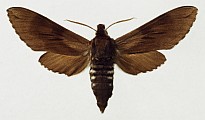Підтримуємо Вільну Україну
 We Support Free Ukraine
We Support Free Ukraine

Biodiversity Map
Taxa

Sphinx — subordinate taxa:
Taxon count: 2
-
Arthropodaphylum
Click to switch
to select orders
and filters > -
Hexapodasubphylum
Click to switch
to select orders
and filters > -
Insectaclass
Click to switch
to select orders
and filters > -
Lepidopteraorder
Click to set
as the main taxon
and as a base
← of the left panel > -
Bombycoideasuperfamily
Click to set
as the main taxon
and as a base
← of the left panel > -
Sphingidaefamily
Click to set
as the main taxon
and as a base
← of the left panel > -
Sphinginaesubfamily
Click to set
as the main taxon
and as a base
← of the left panel > -
Sphinxgenus
Click to set
as the main taxon
and as a base
← of the left panel >
PL
YES
name status: valid name
BioMap ID: 1203272
taxon code: 2218
taxonomy checked: YES
- Views:
- Overview
- Records
- Collections
- Illustrations
- Photos
- Map
Data on distribution in Poland

Statistics
- Records: 29
- Publications: no data
- Collections: 7
- Publication authors: no data
- Illustrations (iconography): 4
- Photos (specimen/observation): 5
Taxon description
Bardzo pospolity i uważany za groźnego szkodnika lasów iglastych motyl lata od V do VII. Gąsienice żerują od VII do IX na sośnie, świerku i rzadziej modrzewiu. Młode gąsienice do ostatniego linienia mają żółtozielone pasy i róg, zakończony widełkami. Po ostatnim linieniu róg staje się cienki i ostry, pasy zamieniają się w plamy. Gąsienice przepoczwarczają się na zimę pod ściółką, płytko w ziemi, W hodowli gąsienice często giną, najlepsze wyniki daje karmienie ich liśćmi modrzewia. Samica tego motyla jest monotonniej ubarwiona, samiec prócz ciemnych kresek ma ciemniejsze pasy. Całkowicie ciemno ubarwione motyle zdarzają się rzadko.
[105: Sphinx pinastri (Linnaeus, 1758) – zawisak borowiec]
[105: Sphinx pinastri (Linnaeus, 1758) – zawisak borowiec]
External data sources
- Ostatnie rekordy
-
1041508
 ⊡
⊡ Sphingidae: Sphinx pinastri, PL, Wyżyna Małopolska, mazowieckie, Białobrzegi, Wyśmierzyce, Kolonia Błeszno ad Wyśmierzyce, UTM DC81, 2017, leg. M. Wełnicki
Sphingidae: Sphinx pinastri, PL, Wyżyna Małopolska, mazowieckie, Białobrzegi, Wyśmierzyce, Kolonia Błeszno ad Wyśmierzyce, UTM DC81, 2017, leg. M. Wełnicki -
1041507
 ⊡
⊡ Sphingidae: Sphinx pinastri, PL, Wyżyna Małopolska, mazowieckie, Białobrzegi, Radzanów, Kolonia Błeszno ad Wyśmierzyce, UTM DC81, 2015, leg. M. Wełnicki
Sphingidae: Sphinx pinastri, PL, Wyżyna Małopolska, mazowieckie, Białobrzegi, Radzanów, Kolonia Błeszno ad Wyśmierzyce, UTM DC81, 2015, leg. M. Wełnicki -
1041506
 ⊡
⊡ Sphingidae: Sphinx pinastri, PL, Wyżyna Małopolska, mazowieckie, Białobrzegi, Radzanów, Kolonia Błeszno ad Wyśmierzyce, UTM DC81, 2017, leg. M. Wełnicki
Sphingidae: Sphinx pinastri, PL, Wyżyna Małopolska, mazowieckie, Białobrzegi, Radzanów, Kolonia Błeszno ad Wyśmierzyce, UTM DC81, 2017, leg. M. Wełnicki -
1032182
 ⊡
⊡ Sphingidae: Sphinx pinastri, PL, Pojezierze Mazurskie, warmińsko-mazurskie, Olsztyn, Olsztynek, Maróz, UTM DE52, 2016, leg. S. Pietrzyk
Sphingidae: Sphinx pinastri, PL, Pojezierze Mazurskie, warmińsko-mazurskie, Olsztyn, Olsztynek, Maróz, UTM DE52, 2016, leg. S. Pietrzyk -
1032180
 ⊡
⊡ Sphingidae: Sphinx pinastri, PL, Pojezierze Mazurskie, warmińsko-mazurskie, Olsztyn, Olsztynek, Maróz, UTM DE52, 2015, leg. S. Pietrzyk
Sphingidae: Sphinx pinastri, PL, Pojezierze Mazurskie, warmińsko-mazurskie, Olsztyn, Olsztynek, Maróz, UTM DE52, 2015, leg. S. Pietrzyk -
1032179
 ⊡
⊡ Sphingidae: Sphinx pinastri, PL, Pojezierze Mazurskie, warmińsko-mazurskie, Olsztyn, Olsztynek, Maróz, UTM DE52, 2014, leg. S. Pietrzyk
Sphingidae: Sphinx pinastri, PL, Pojezierze Mazurskie, warmińsko-mazurskie, Olsztyn, Olsztynek, Maróz, UTM DE52, 2014, leg. S. Pietrzyk -
1028086
 ×
× Sphingidae: Sphinx pinastri (Heintze 1990)
Sphingidae: Sphinx pinastri (Heintze 1990) -
869324
 ⊡
⊡ Sphingidae: Sphinx pinastri, PL, Pojezierze Pomorskie, pomorskie, Bukowiny, UTM CE35, 2008, leg. S. Łuczkowski
Sphingidae: Sphinx pinastri, PL, Pojezierze Pomorskie, pomorskie, Bukowiny, UTM CE35, 2008, leg. S. Łuczkowski -
869323
 ⊡
⊡ Sphingidae: Sphinx pinastri, PL, Pojezierze Pomorskie, pomorskie, Bukowiny, UTM CE35, 2008, leg. S. Łuczkowski
Sphingidae: Sphinx pinastri, PL, Pojezierze Pomorskie, pomorskie, Bukowiny, UTM CE35, 2008, leg. S. Łuczkowski -
869321
 ⊡
⊡ Sphingidae: Sphinx pinastri, PL, Pojezierze Pomorskie, Kujawy, pomorskie, leśn. Sowi Dół, UTM CE27, 1998, leg. S. Łuczkowski
Sphingidae: Sphinx pinastri, PL, Pojezierze Pomorskie, Kujawy, pomorskie, leśn. Sowi Dół, UTM CE27, 1998, leg. S. Łuczkowski - ... more
















